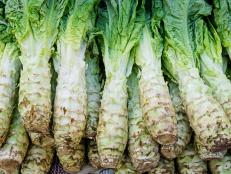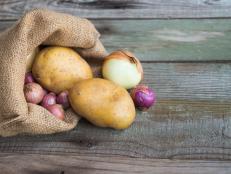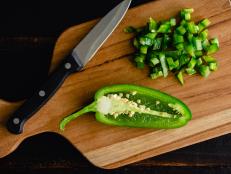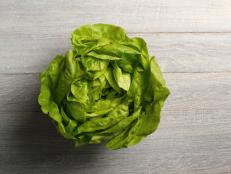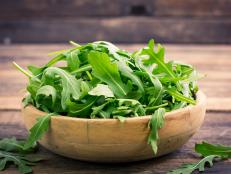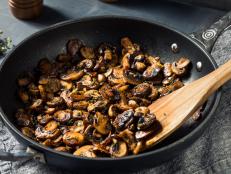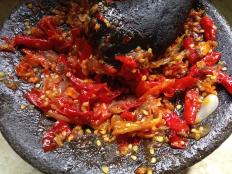How to Cook Beets
The five best ways to cook this vibrant veggie, plus tips for buying, storing and avoiding stains.

nadiasphoto/Getty Images
By Alice K. Thompson for Food Network Kitchen
Alice is a contributing writer and editor at Food Network.
With their bright colors and leafy greens, displays of beets can be eye-catching. But how do you cook them once you get home — or find your way out of a routine cooking rut? The good news is you’ve got a lot of options, some of which are unexpectedly speedy. Read on for our top five ways to cook beets, plus tips on buying and storing them, and how to avoid those dreaded beet-juice stains on your hands and countertops. Not in the mood to cook but still want a veggie-forward meal? We’ll even tell you the best ways to prepare beets raw.
How to Buy and Store Beets
You’ll find beets year-round, although those harvested in the summer and fall will be freshest. Dazzling bunches at farmers’ markets and specialty stores have an array of colors and sizes to pick from, including sweet golden beets, red-striped candy-cane or Chioggia beets and various kinds of baby beets. And, even your local supermarkets should have excellent ones on hand year-round.
Beets are commonly sold in two ways: in bunches with their green tops still attached, or loose with the tops trimmed. Always buy bunched beets if you can since they’ll be freshest. Plus you’ll have the option to cook the tasty, vitamin-rich beet greens; you can prepare them anyway you would kale or chard. Opt for smaller beets when possible. Those larger than tennis balls are typically less flavorful and sometimes have woody cores. Either way, choose firm beets with skin that’s free of cuts or discoloration.
Always store beets unwashed. First cut all but an inch of the greens and stems off the tops. Wrap the beet roots loosely in dry paper towels and place them in a plastic or paper bag or in an airtight container. Refrigerate them in the crisper drawer. Fresher is always better with beets, but they’ll keep remarkably well for a month or more stored this way. You can refrigerate the greens separately in exactly the same way for a day or two.

NightAndDayImages/Getty Images
How to Prep Beets
Beets can be muddy, so first give them a good rinse under cold water. Scrubbing with a soft brush is ideal, especially where the greens meet the root. For bunch beets, cut the greens off leaving about an inch of stems attached. If you’re roasting or cooking the beets whole with the skin on just pat them dry. If you need to peel them it’s easiest to use a vegetable peeler, although a paring knife works too.
How to Avoid Beet Stains
The brilliant color of red beets is one of their attractions, but be aware that the juice is famously staining — so much so that it’s one of the most popular natural dyes. Take a few precautions to avoid living with the color longer than you like.
Peel beets after cooking, not before, so that their color (and nutrients) won’t leach out as much.
Wear gloves when peeling or cutting beets to protect your hands from stains.
Wear a dark apron or dark clothing when handling beets.
Rinse cutting boards and counters immediately to avoid stains setting in. Better yet, cover your board with parchment paper before chopping beets.
Consider buying yellow beets when they’re on offer; their juice won’t stain as aggressively.
How to Cook Beets Five Ways
Here are the most versatile ways to cook beets no matter what recipe you want to use them in.
How to Roast Whole Beets
Roasting beets whole is easy and will give you a range of ways to use them. Plus peeling them after roasting is a cinch and neeter than peeling raw beets.
Step one: Preheat oven and clean beets. Preheat the oven to 400 degrees F. Remove any beet greens, leaving 1 inch of stem. Rinse beets well.
Step two: Wrap in foil. For medium or large beets, drizzle them with oil and wrap each very securely in foil; small and baby beets can be wrapped together. Place the wrapped beets on a rimmed baking sheet.
Step three: Roast until tender. Roast the beets until they’re tender when pierced with a toothpick or the tip of a paring knife, 40 to 50 minutes depending on their size.
Step four: Cool and remove skins. Allow the beets to cool, then unwrap them. Cover your hand with a paper towel or very dark kitchen towel and rub off the skins.
Cooked whole beets are excellent warm or cold drizzled with vinaigrette, or you can pickle them, use them in hash, use them in beet hummus, add them to salads and grain bowls and more.

Oksana Shyriaieva/Getty Images
How to Roast Cut Beets
The advantage of roasting beets peeled and cut is that you’ll get wonderful caramelization all over them thanks to their high sugar content. Plus they’ll be ready a bit quicker than whole-roasted beets.
Step one: Preheat oven. Preheat the oven to 425 degrees F. Line a rimmed baking sheet with foil or parchment paper if you like (it will help with cleanup).
Step two: Peel and prepare beets. Peel beets with a vegetable peeler (see tips to avoid staining above) and cut them into 1-inch pieces or wedges or the size you prefer. Place the beets in a single layer on the prepared pan and drizzle with oil and sprinkle with salt.
Step three: Roast until tender. Roast the beets, stirring them every 10 minutes, until tender and just browned, about 30 minutes.
Roast beets are incredibly flavorful just on their own, or add them to salads, bowls, or soups. You can even use them in tacos or sandwiches. Want to roast other root vegetables like carrots or parsnips along with the beets? Just make sure the other vegetables don’t touch the beets on the baking sheet or they’ll be dyed ruby-red too; either set up “zones” so the vegetables stay apart on your baking sheet or use separate pans.
How to Boil Beets
Beets boil up quickly and with little fuss, and they’ll be softer and juicier than roasted beets. But be aware that some of their juices (and nutrients) will leak out into the water. You can reduce leeching by only boiling unpeeled beets and adding an acid like a squeeze of fresh lemon juice to the water.
Step one: Bring water to a boil. Bring a pot filled two-thirds full of water to a boil. Rinse and trim the tops of the beets but don’t peel them.
Step two: Add acid and beets and cook. When the water boils, add 1 to 2 tablespoons vinegar or lemon juice to the water. Add the beets and adjust the heat so they just simmer. Cook until they’re tender when pierced with a toothpick or the tip of a paring knife, anywhere from 20 to 50 minutes.
Step four: Cool and remove skins. Remove the beets from the water with tongs and allow to cool. When cool enough to handle, cover your hand with a paper towel or very dark kitchen towel and rub off the skins.
Boiled beets are excellent for pickling, in salads, in soups, dips and more. Or just sprinkle one with salt and pepper and eat it right off a fork.

Matt Armendariz
How to Microwave Beets
Here’s a super-quick way to cook beets that takes a fraction of the time roasting does. This works best with small or medium beets and smaller quantities of 1 to 1 1/2 pounds at most.
Step one: Clean and prick beets. Remove any beet greens, leaving 1 inch of stem. Rinse beets well. Poke each beet a few times with the tines of a fork.
Step two: Wrap and microwave. Place each beet on a square of microwave-safe parchment paper. Wrap the beet snuggly. Place on a microwave-safe plate. Microwave until the beets are tender when pierced with a toothpick or tip of a paring knife, anywhere from 5 to 12 minutes.
Step three: Cool and remove skins. Use an oven mitt to remove the plate from the microwave. Cool the beets, then unwrap them. Cover your hand with a paper towel or very dark kitchen towel and rub off the skins.
Use microwaved beets any way you would whole boiled or roasted beets.
How to Cook Beets in an Air Fryer
Air fryers are excellent and speedy for cooking root vegetables, and beets are no exception. They’ll come out crisp-tender and nicely caramelized almost as quickly as it would take to preheat a conventional oven.
Step one: Peel and season beets. Peel the beets (see tips to avoid staining above) and cut them into 3/4-inch pieces or wedges or any size you prefer. Place the beets in a bowl and toss with oil and salt and pepper.
Step two: Cook 15 to 18 minutes. Place the beets in a single layer in the basket of your air fryer. Set the temperature to 360 degrees F and cook until the beets are browned and tender, 15 to 18 minutes, shaking the basket a few times during cooking.
These beets are so flavorful you can eat them with just a drizzle of balsamic, or use them any way you would roasted beets.
How to Eat Beets Raw
If you’ve got small, fresh beets, try eating them raw. Their sweet and earthy taste is perfect in salads and slaws or as a colorful garnish for just about anything. Peel the beets with a vegetable peeler (see tips to avoid staining above), then either slice them paper-thin or grate them. Candy-cane beets are particularly attractive sliced in salads, as in this Shaved Vegetable Salad pictured above.You can also quick-pickle beets raw if you like for a treat that will last refrigerated for up to 2 weeks.
Related Links:
























